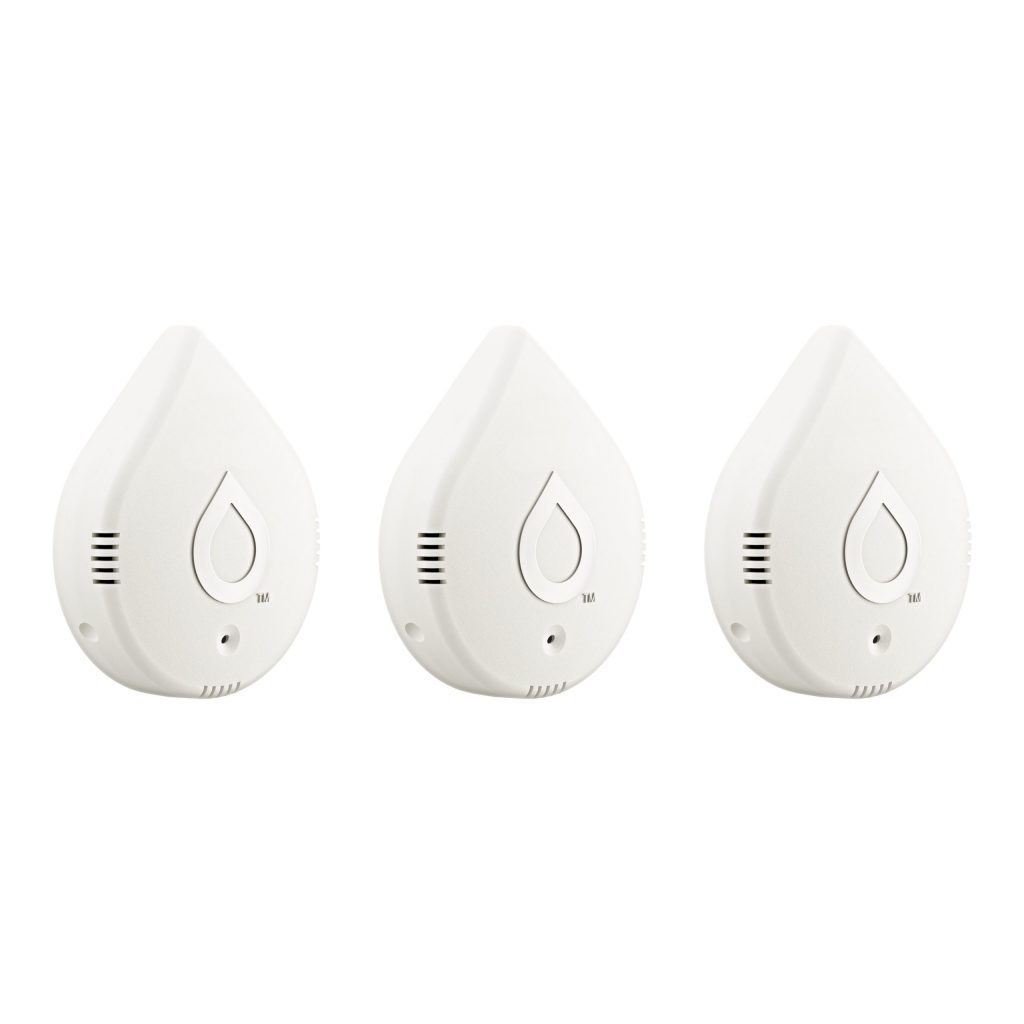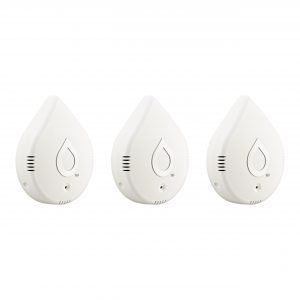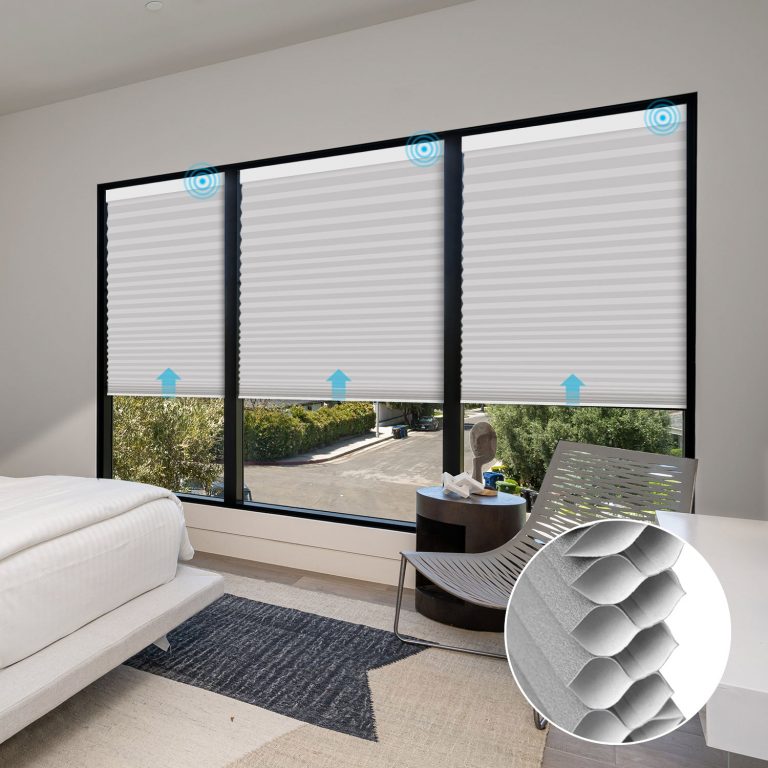Real-world field notes from a contractor who actually installed them
Water damage is the silent budget killer for homeowners—one pin-hole leak can ruin cabinets, flooring, or drywall long before you see the first drip. As a licensed contractor with a plumbing background, I spent the past few months installing, testing, and occasionally fixing today’s most popular leak detectors and smart shut-off valves. Below is what I learned, written in plain English, with no marketing fluff.
Key Takeaways
- Contact probes matter: Several puck-style sensors ship with plastic “feet” that keep probes 1 ⁄ 16-inch off the surface. Sand them flush (or remove the feet) and sensitivity skyrockets.
- Alerts are only as good as your settings: Every brand will push phone notifications; only a few do text or email without extra work.
- Volume counts: In a noisy house, anything under 80 dB is easy to miss.
- Automation = peace of mind: Pairing a leak sensor with an automatic shut-off valve delivers true protection—detect, alert, and cut the water.
- Support separates good from great: Moen and YoLink answered my e-mail within an hour; that’s priceless when your floor is already wet.
The Line-Up (Hands-On Impressions)
YoLink Water Leak Sensor 4
What I liked
– Loud 105 dB siren plus push notifications
– Industry-leading LoRa radio = 1,000 ft range
– Excellent tech support (e-mail replies in < 1 hr)
Room for improvement
– Plastic feet keep probes off the floor; sanding them flush is a must for thin water films
Verdict
After the quick DIY mod, the sensor caught a single-drop-per-hour drip in my bathroom vanity—saving the cabinet from swelling.
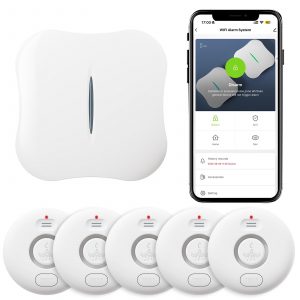
Kidde Water Leak + Freeze Detector
Essentially the same puck design—and the same “floating probes” issue. Once the feet were trimmed, detection was instant. App is straightforward; e-mail alerts require a separate cloud toggle that’s buried two menus deep.
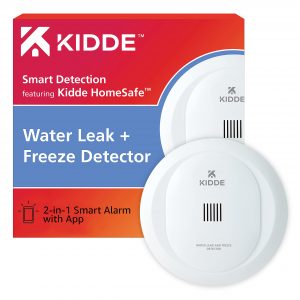
Govee Water Leak Detector 2 + Hub
Great price, but the Wi-Fi pairing wizard asks you to disconnect phone Wi-Fi and join the hub SSID—confusing at first. Sensitivity fix = same sanding trick. Once online, the dashboard is clean and allows limitless sensors.
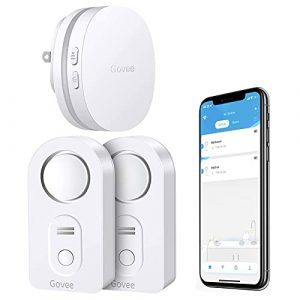
Eve Water Guard (2nd Gen)
Simple, very loud (similar to a smoke alarm). Uses a 6.5-ft sensing cable—fantastic for wrapping around a water heater pan. HomeKit native; no feet to sand.
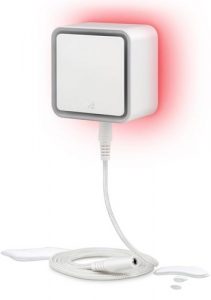
Moen Smart Leak Detector
Integrates nicely with Moen’s Flo shut-off valve (next review). Audible alarm is moderate; cloud alerts reliable. Needs the same probe-height tweak to catch thin films.
Flo by Moen Smart Water Shutoff
Six years in my own house without a hiccup. Recent spray-head issue was fixed after one call—zero wait time—and Moen overnighted the part. Battery change every 2–3 yrs. A premium unit, but Moen’s support justifies the price.
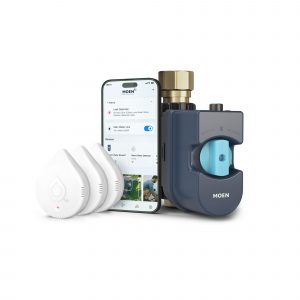
Flume 2 Smart Water Monitor
Clamps around your existing meter and tracks gallons in real time. No in-home leaky-puddle detection, but unbeatable for spotting hidden slab or irrigation leaks. Push alerts within 5 mins of abnormal flow.
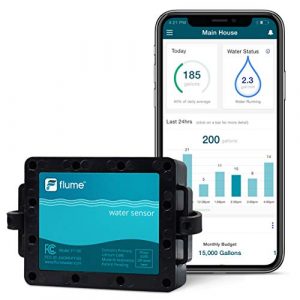
Shelly Flood Gen 4
Wi-Fi + optional temp/humidity probes make this the hacker’s dream. I’m using one relay to cycle a 3 kW heater based on the virtual thermostat. Ideal for DIYers comfortable with custom sensors.
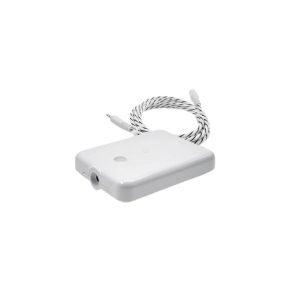
SwitchBot Wi-Fi Water Sensor
Same puck, same feet, same fix. Bonus: integrates with SwitchBot curtain, meter, and bot ecosystem, opening up creative automations like “pause the washing machine if a leak is detected.”
YoLink Hub
The backbone for all YoLink gear. Pairing took under 5 minutes. I struggled to locate text/e-mail toggles, but YoLink’s team sent a step-by-step email in under an hour. Works with Alexa and IFTTT; LoRa means the hub can live at one end of the house and still reach the detached garage.
Quick Notes on Non-Leak Devices I Tested
| Product | Why It Made The List | Real-World Note |
|---|---|---|
| First Alert L1 Smoke Alarm | Same wiring harness as most new builds | Mounting plate swap required—keep a screwdriver handy |
| Apple TV (Latest Gen) | Cheapest way to “smartify” an old Sanyo TV | Setup = one HDMI and a phone app; streaming in < 10 min |
| HomePod + Kasa Smart Plugs | Voice control for lamps & holiday décor | My clients with mobility issues love the hands-free operation |
Feature-by-Feature Comparison
| Device | Alarm Volume | Cloud Alerts | Battery Life | Probe Style | Smart-Home Hooks |
|---|---|---|---|---|---|
| YoLink WL Sensor 4 | 105 dB | SMS, Push, Email | > 2 yrs | Puck (needs sanding) | Alexa, Google, IFTTT |
| Kidde Leak+Freeze | 90 dB | Push, Email | 1–2 yrs | Puck (needs sanding) | None (stand-alone) |
| Govee Leak 2 + Hub | 100 dB | Push, Email | 1 yr | Puck (needs sanding) | Alexa, Google |
| Eve Water Guard | 100 dB | Push | Powered (no batt.) | 6.5 ft cable | Apple HomeKit |
| Moen Smart Leak | 85 dB | Push | 1–1.5 yrs | Puck (needs sanding) | Alexa, Google |
| Flume 2 Monitor | N/A | Push | 2 yrs | Flow meter | Alexa, Google |
| Shelly Flood G4 | 90 dB | Push | 1 yr | Puck (no feet) | MQTT, Home Assistant |
| SwitchBot Wi-Fi | 90 dB | Push | 1 yr | Puck (needs sanding) | Alexa, Google, IFTTT |
All volumes measured with a phone SPL meter at 3 ft.
Installation Tips From The Field
- Surface prep: Wipe dust and debris; sensors need bare contact.
- Probe tweak: If your unit has rubber feet, pry them off or sand until metal contacts are flush.
- Cabinet waterproofing: Run a silicone bead where the floor meets the sides, then coat with two layers of polyurethane. This forces leaks to pool—exactly what your sensor needs.
- Test monthly: A wet fingertip across the probes or a damp paper towel works fine. Replace batteries yearly, even if the app says “OK.”
- Automate shut-off: Pair a sensor with a valve (Moen Flo, YoLink Bulldog, etc.) and program: “If leak, then close main.” One false alarm is cheaper than one flooded floor.
Frequently Asked Questions
Q: Will sanding the feet void my warranty?
A: Technically yes, but it’s a non-electrical cosmetic change. I’ve yet to see a vendor refuse service because of it.
Q: How many sensors do I really need?
A: Minimum five: water heater, each sink base, behind fridge, washing machine, and HVAC drain pan.
Q: Wi-Fi vs. LoRa vs. Thread—is range a big deal?
A: If your basement or detached garage has weak Wi-Fi, LoRa (YoLink) or Thread (Eve) is safer. Otherwise any 2.4 GHz sensor will do.
Final Word
After hundreds of installs, I keep reaching for YoLink sensors + hub for coverage and battery life, and Moen Flo when a customer wants automatic shut-off. For Apple-centric homes, Eve Water Guard is a no-brainer, while tinkerers should grab Shelly Flood.
Whatever you choose, remember the golden rule: test it before you need it. A five-second alarm drill today can save five figures in repairs tomorrow.
Stay dry out there!
— James R., Licensed Contractor & Relentless Leak-Hunter
“`
